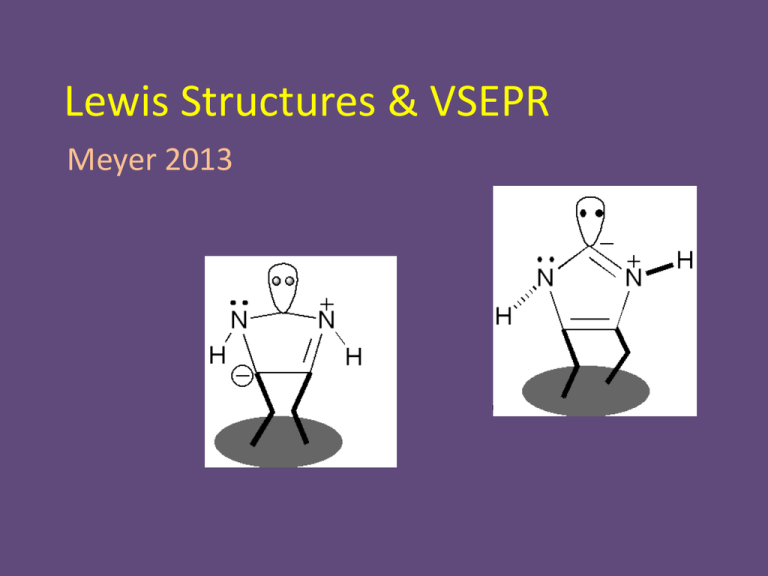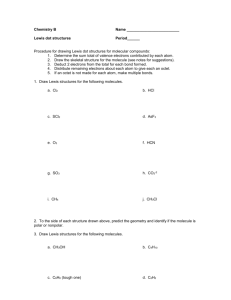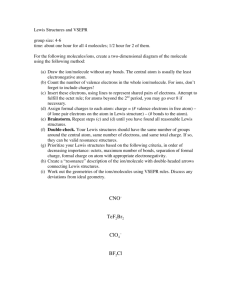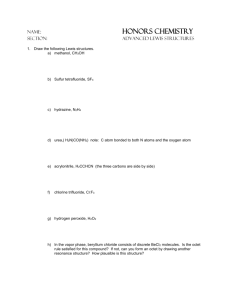Lewis Structures & VSEPR
advertisement

Lewis Structures & VSEPR Meyer 2013 Lewis Structures • Lewis Structure – Picture of a molecule – Uses lines to indicate chemical bonds – Uses dots to indicate electrons – Shows 2 dimensional image of molecule Basic Rules • All atoms want 8 electrons (hydrogen is the only exception it wants 2) • Hydrogen & halogens are never central atoms • Carbon tends to be a central atom The Official rules for Lewis structures 1. Calculate the total number of valence e- add all the # valence e- for each atom – If you are writing a Lewis structure for an ion with a + or – charge, be sure to add or subtract electrons as the charge indicates. The Official rules for Lewis structures 2. Write the skeleton structure for the molecule or ion, connect every bonded pair of atoms with a dash. (Hint: the least electronegative atom is the central atom) The Official rules for Lewis structures 3. Distribute electrons to the atoms surrounding the central atom (or atoms) to satisfy the octet rule for these surrounding atoms. The Official rules for Lewis structures 4. If fewer than eight electrons are present around the central atom, a double or triple bond may be necessary. • To obtain a double or triple bond, move one or two electron pairs from a surrounding atom to bond with the central atom. • Sulfur, carbon, oxygen, and nitrogen all typically form double bonds. Carbon and nitrogen also form triple bonds. Practice Problems Draw a Lewis structure for each: • • • • • Carbon Tetrachloride Hydrogen sulfide Sulfate ion Carbon dioxide Carbonate ion Practice Problems Draw a Lewis structure for each: • • • • • Carbon Tetrachloride CCl4 Hydrogen sulfide H2S Sulfate ion SO4-2 Carbon dioxide CO2 Carbonate ion CO3-2 VSEPR Theory • Valence-Shell Electron-Pair Repulsion (VSEPR) is a simple method for determining geometry. • Basis: pairs of valence electrons in bonded atoms repel one another. • These mutual repulsions push electron pairs as far from one another as possible. When the electrons B B A B B B A B bond, the elements are as far apart as they can get. What is the B-A-B angle? A Balloon Analogy • Electron groups repel one another in the same way that balloons push one another apart. • When four balloons, tied at the middle, push themselves apart as much as possible, they make a tetrahedral shape.





